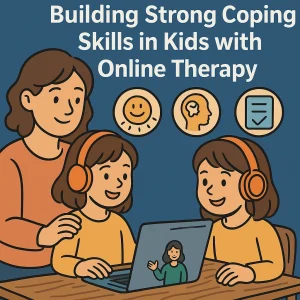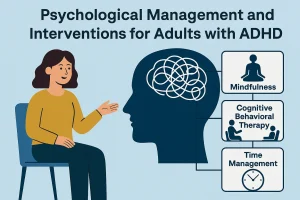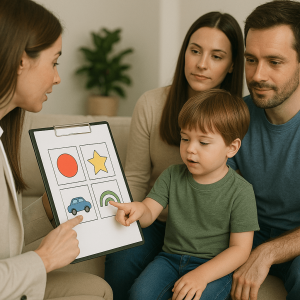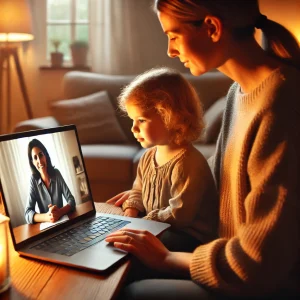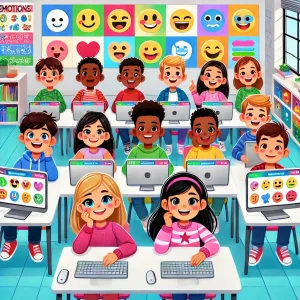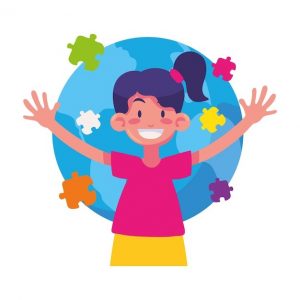Art and Music in Online Therapy: A Path to Emotional Expression
Last Updated: August 20, 2024
In recent years, online therapy has become a cornerstone of modern mental health care, offering a flexible and accessible way for individuals to receive the support they need. Whether it’s the convenience of attending sessions from home or the ability to connect with a therapist across geographical boundaries, online therapy is reshaping how we approach mental well-being.
Amidst this evolution, the integration of creative therapies like art and music into online sessions has gained significant traction. These therapeutic methods offer a unique path for emotional expression, particularly for those who may struggle to articulate their feelings through words alone. By providing an alternative outlet for emotions, art and music have proven to be powerful tools in helping clients explore their inner worlds.
Understanding Emotional Expression in Therapy
Emotional expression is a vital component of the therapeutic process. It involves the ability to convey thoughts, feelings, and emotions, either verbally or non-verbally, allowing individuals to process and make sense of their internal experiences. In therapy, this expression helps clients uncover underlying issues, build self-awareness, and foster healing.
However, traditional talk therapy, while highly effective for many, may not always sufficient for everyone. Some people find it challenging to articulate their emotions through words alone, especially when the emotions are complex, overwhelming, or deeply rooted. This limitation can hinder the therapeutic process, leaving clients struggling to fully engage or progress in their therapy.
This is where the integration of art and music in therapy becomes invaluable. These creative outlets offer alternative avenues for emotional expression, enabling clients to communicate what might be too difficult to put into words. For instance, drawing or painting can help a person visually represent their feelings, while music can evoke and release emotions in ways that talking cannot. This is particularly beneficial in online therapy settings, where physical distance can make emotional connection more challenging.
Also read: Emotional Regulation for Kids: Easy Tips and Activities
Benefits of Using Art in Online Therapy
Art has a unique ability to transcend words, making it an invaluable tool in therapy, especially for those who find verbal expression challenging. In online therapy, where the physical presence is absent, the use of art can bridge the gap, allowing clients to communicate their emotions visually.
Visual Communication
For many, words are not always enough to capture the depth of their emotions. This is where art steps in, providing a visual language that can express what might be too complex or painful to verbalize. Whether it’s through drawing, painting, or digital art, clients can create images that represent their feelings, fears, or memories. This form of communication is especially powerful in online therapy, where the therapist and client are not physically present together. By sharing their artwork during sessions, clients can convey emotions that might otherwise remain hidden, fostering a deeper connection and understanding between the therapist and client.
Stress Relief
Creating art is more than just an expression; it’s a form of relaxation. The act of drawing, painting, or crafting allows clients to immerse themselves in the creative process, providing a distraction from stressors and offering a sense of calm. In online therapy, this calming effect is particularly beneficial as it can help clients feel more grounded and present during sessions. The repetitive motions involved in creating art can also have a meditative effect, reducing anxiety and promoting a sense of inner peace. For those who experience stress or anxiety, incorporating art into online therapy can be a soothing and effective way to manage these emotions.
Enhanced Self-Understanding
Art has the power to unlock parts of the self that may not be accessible through words alone. By engaging in the creative process, clients can explore their inner thoughts, feelings, and experiences on a deeper level. This exploration can lead to greater self-awareness, as clients begin to understand the underlying causes of their emotions and behaviors. In online therapy, this enhanced self-understanding is facilitated through guided artistic exercises that encourage reflection and insight. As clients reflect on their creations, they can gain valuable insights into their emotional world, leading to breakthroughs in their therapeutic journey.
Also read: Top Online Behavioral Therapy Techniques for Young Children
Benefits of Using Music in Online Therapy
Music has a profound effect on our emotions, making it an essential tool in therapy. When incorporated into online therapy, music can provide clients with a unique way to express, regulate, and understand their emotions, enhancing the overall therapeutic experience.
Emotional Release
Music has the ability to evoke emotions that are often buried deep within us. A simple melody or a powerful rhythm can bring to the surface feelings that words alone cannot express. In online therapy, music can serve as a safe outlet for releasing these pent-up emotions. Whether through listening to a song that resonates with their current state or creating their own music, clients can process and express emotions that might otherwise remain unspoken. This emotional release can be especially valuable for individuals who struggle with verbal communication, allowing them to experience a cathartic release that supports their mental health journey.
Mood Regulation
One of the most remarkable benefits of music is its ability to influence and regulate our moods. Whether a client needs to lift their spirits, calm their nerves, or find balance in a chaotic emotional state, music can provide the necessary shift. In online therapy, therapists can use music strategically, selecting playlists or encouraging clients to create their own music to help stabilize their emotions. This can lead to a more effective and focused therapy session, as clients are better able to engage with the therapeutic process when their mood is regulated. The comforting and familiar nature of music also provides a sense of security, making it easier for clients to open up during their sessions.
Connection and Comfort
Familiar or favorite music has a way of making us feel connected and comforted. In therapy, this connection can be a powerful tool for building trust and creating a safe space for clients to explore their emotions. During online sessions, where physical presence is lacking, music can act as a bridge, bringing a sense of warmth and closeness to the therapeutic relationship. Clients who are hesitant or anxious about therapy may find comfort in listening to music that feels personal and reassuring. This can help to ease any barriers to communication, allowing for a deeper and more meaningful therapeutic connection.
Simple Techniques for Using Art in Online Therapy
Using art in online therapy is a great way for people to express their feelings. These methods work well, even when the therapist and client are not in the same room.
Drawing and Painting
Drawing and painting help clients show their emotions without using words. During sessions, therapists might ask clients to draw or paint something that represents their mood or a memory. These activities allow clients to express their feelings creatively and talk about their emotions with the therapist. Whether using digital tools or paper, clients can share their artwork instantly with the therapist.
Collage Making
Collage making is a fun way to explore deep feelings. Clients can use digital tools or physical materials to create collages by combining images, colors, and textures. This process helps clients express emotions that might be hard to say out loud. Collage making encourages creativity and self-reflection.
Art Journaling
Art journaling is a mix of art and self-reflection. Clients keep a journal where they regularly draw, paint, or create collages to show their feelings and progress. During online therapy sessions, therapists can review the journal with the client, helping them understand their emotions better. This journal also tracks the client’s growth over time.
Challenges and Considerations
While incorporating art and music into online therapy offers numerous benefits, there are also challenges that both therapists and clients need to consider. Addressing these challenges is crucial for ensuring that the therapeutic experience is effective and supportive.
Technical Limitations
One of the primary challenges of using art and music in an online therapy setting is the technical limitations that may arise. Reliable internet connectivity is essential for smooth communication and interaction during sessions, but not all clients may have access to high-speed internet. Connectivity issues can disrupt the flow of a session, making it difficult for clients to fully engage in activities like sharing artwork or streaming music. Additionally, some clients may not have access to the necessary materials or digital tools needed for creating art or music, limiting their ability to participate in these therapeutic techniques. To mitigate these issues, therapists can suggest alternative methods or provide guidance on using readily available resources, ensuring that clients can still benefit from creative expression despite technical challenges.
Therapist Training
The integration of art and music into therapy requires specialized skills and knowledge. Not all therapists may be trained in these areas, which can limit their ability to effectively incorporate these techniques into online sessions. Proper training is essential to ensure that therapists can guide clients through creative activities in a way that is both therapeutic and aligned with the client’s emotional needs. This includes understanding how to interpret and respond to the emotions expressed through art and music, as well as knowing how to adapt these techniques to an online format. Therapists who are well-trained in these areas can offer a more enriching and supportive experience for their clients, helping them to fully benefit from the therapeutic power of art and music.
Client Comfort Level
It’s important to recognize that not all clients may feel comfortable or interested in using art and music as part of their therapy. Some clients might prefer traditional talk therapy or may feel self-conscious about their artistic or musical abilities. Others may find it challenging to engage in these activities online, where the physical presence and immediate feedback from the therapist are absent. For these clients, forcing creative techniques could lead to disengagement or discomfort. Therapists should be sensitive to these preferences and offer alternatives that align with the client’s comfort level. This might include other forms of creative expression, such as writing or storytelling, or focusing on more traditional therapeutic approaches.
Art Therapy vs. Music Therapy
| Aspect | Art Therapy | Music Therapy |
|---|---|---|
| Primary Medium | Visual mediums such as drawing, painting, and collage. | Auditory mediums including listening, creating, and movement. |
| Emotional Focus | Focuses on visual communication and enhancing self-understanding through creative expression. | Focuses on emotional release and mood regulation by tapping into the therapeutic power of sound and rhythm. |
| Tools Needed | Requires art supplies like paints, brushes, paper, or digital drawing tools such as tablets and apps. | Involves music playlists, musical instruments, and music creation apps or software. |
| Best For | Ideal for clients who are more comfortable expressing their emotions visually, especially those who find it difficult to verbalize their feelings. | Best suited for clients who are responsive to auditory stimuli and those who benefit from emotional connection through sound. |
Conclusion
Expressing emotions is a vital part of therapy, helping people understand and heal from their inner challenges. While talking is essential, using art and music in therapy adds a special touch. These creative methods allow people to share feelings that might be hard to put into words, making therapy more effective, especially in online sessions.
As online therapy grows, using art and music becomes even more important. These tools offer new ways for healing and self-discovery. If you’re looking for personalized online therapy, consider a service that includes these creative approaches. At Wellness Hub, we focus on providing tailored online therapy that uses art and music to help you express yourself and feel better.
Frequently Asked Questions:
1. What is the role of art and music in online therapy?
Art and music play a significant role in online therapy by offering alternative ways for clients to express their emotions. These creative therapies help clients communicate feelings that might be difficult to express through words alone, enhancing the overall therapeutic experience.
2. How can art therapy be used in an online therapy session?
In online therapy, art therapy can be used through activities like drawing, painting, collage making, and art journaling. These activities help clients explore their emotions visually and share their creations with their therapist for deeper discussions.
3. What are the benefits of using music in online therapy?
Music in online therapy offers several benefits, including emotional release, mood regulation, and a sense of connection and comfort. Listening to music, creating music, or combining music with movement can help clients express and process their emotions effectively.
4. Are there any challenges in using art and music in online therapy?
Yes, some challenges include technical limitations like internet connectivity, the need for specialized therapist training, and the varying comfort levels of clients with these forms of therapy. It’s important to address these challenges to ensure a successful online therapy experience.
5. Can anyone benefit from art and music therapy in online sessions?
While many people benefit from art and music therapy, not everyone may feel comfortable with these methods. It’s essential for therapists to consider each client’s preferences and offer alternatives that suit their comfort level and therapeutic needs.
6. How do art and music enhance emotional expression in online therapy?
Art and music provide non-verbal ways to express complex emotions. They allow clients to explore and communicate their feelings creatively, which can lead to greater self-awareness and emotional healing during online therapy sessions.
7. What are some techniques for incorporating art into online therapy?
Techniques for incorporating art into online therapy include drawing and painting, collage making, and art journaling. These activities encourage clients to visually express their emotions and track their progress over time.
8. How can music be integrated into online therapy sessions?
Music can be integrated into online therapy through listening sessions with curated playlists, music creation, and combining music with movement or dance. These methods help clients connect with their emotions and express themselves in new ways.
9. Why is it important for therapists to be trained in art and music therapy?
Therapist training in art and music therapy is crucial to effectively guide clients through these creative processes. Proper training ensures that therapists can interpret clients’ artistic and musical expressions and adapt these techniques to an online format.
10. How does Wellness Hub incorporate art and music into online therapy?
Wellness Hub offers innovative and personalized online therapy services that integrate art and music to enhance emotional expression. These creative therapies are tailored to help clients explore their feelings and achieve better emotional well-being.
About Author:
Lasya Vooturi,
Clinical Psychologist (A) & Behavioral Therapist
Lasya holds a Professional Diploma in Clinical Psychology from Amity University, where she deepened her understanding of psychological principles from March 2023 to March 2024. With over a year of dedicated experience as a Behavioral Therapist, Lasya has honed her skills in applying effective therapy techniques tailored to individual needs. Fluent in Telugu, Hindi, and English, she is adept at connecting with a diverse range of clients, ensuring comprehensive communication and understanding. Lasya’s approach is grounded in empathy and scientific rigor, making her a trusted ally in navigating mental health challenges.
Book your Free Consultation Today
Parent/Caregiver Info:
Client’s Details:
* Error Message
